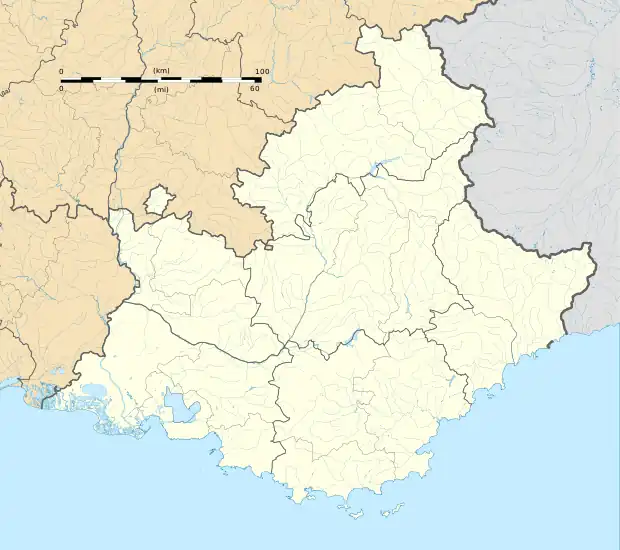Saint-Paul-sur-Ubaye
Saint-Paul-sur-Ubaye (French pronunciation: [sɛ̃ pɔl syʁ ybaj], lit. "Saint Paul-on-Ubaye"; Vivaro-Alpine: Sant Pau d'Ubaia) is an alpine commune on the Italian border in the Alpes-de-Haute-Provence department in the Provence-Alpes-Côte d'Azur region in Southeastern France. In 2019, it had a population of 180.
Saint-Paul-sur-Ubaye | |
|---|---|
 A view of the hamlet of Grande Serenne, in the commune of Saint-Paul-sur-Ubaye | |
Location of Saint-Paul-sur-Ubaye | |
 Saint-Paul-sur-Ubaye  Saint-Paul-sur-Ubaye | |
| Coordinates: 44°30′57″N 6°45′08″E | |
| Country | France |
| Region | Provence-Alpes-Côte d'Azur |
| Department | Alpes-de-Haute-Provence |
| Arrondissement | Barcelonnette |
| Canton | Barcelonnette |
| Intercommunality | Vallée de l'Ubaye - Serre-Ponçon |
| Government | |
| • Mayor (2020–2026) | Bernard Isoard[1] |
| Area 1 | 205.55 km2 (79.36 sq mi) |
| Population | 177 |
| • Density | 0.86/km2 (2.2/sq mi) |
| Time zone | UTC+01:00 (CET) |
| • Summer (DST) | UTC+02:00 (CEST) |
| INSEE/Postal code | 04193 /04530 |
| 1 French Land Register data, which excludes lakes, ponds, glaciers > 1 km2 (0.386 sq mi or 247 acres) and river estuaries. | |
Geography
With an area of 205.55 km2 (79.36 sq mi), the commune of Saint-Paul-sur-Ubaye is the largest commune in the Alpes-de-Haute-Provence department by surface area.
It is located in the department's northeastern part, on the departmental border with Hautes-Alpes.
Demographics
|
|
References
- "Répertoire national des élus: les maires" (in French). data.gouv.fr, Plateforme ouverte des données publiques françaises. 13 September 2022.
- "Populations légales 2020". The National Institute of Statistics and Economic Studies. 29 December 2022.
Wikimedia Commons has media related to Saint-Paul-sur-Ubaye.
This article is issued from Wikipedia. The text is licensed under Creative Commons - Attribution - Sharealike. Additional terms may apply for the media files.